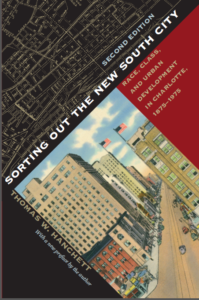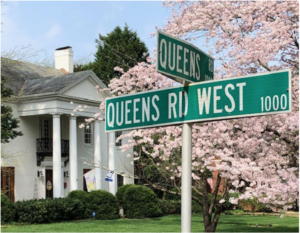 “1000 acres designed aright from the first and influenced only by the best practice in modern town planning.” – Nolen on Myers Park, New Towns for Old
“1000 acres designed aright from the first and influenced only by the best practice in modern town planning.” – Nolen on Myers Park, New Towns for Old
Boston-based John Nolen, America’s top landscape planner in the early 20th century, laid out Myers Park beginning in 1911. The winding streets attracted Charlotte’s business elite in banking, textiles, real estate and electric power. Today it’s an official historic district on the National Register of Historic Places.
What to see? Colonial, Tudor and Bungalow style residences, plus one of Charlotte’s first greenway parks, all under a lush canopy of trees.
How long? Slightly under 2 miles. (under 1.5 miles if you take the shortcut in the middle). That’s less than an hour walking time.
Please stay on the public sidewalk. Only one house, the Duke Mansion, is open to visitors.
Where to start? Near 101 Hermitage Road, corner of Queens Road, find the streetcar waiting station built of stone. There’s on-street parking along Hermitage.
1. STREETCAR WAITING STATION – near 101 Hermitage Road / 699 Queens Road
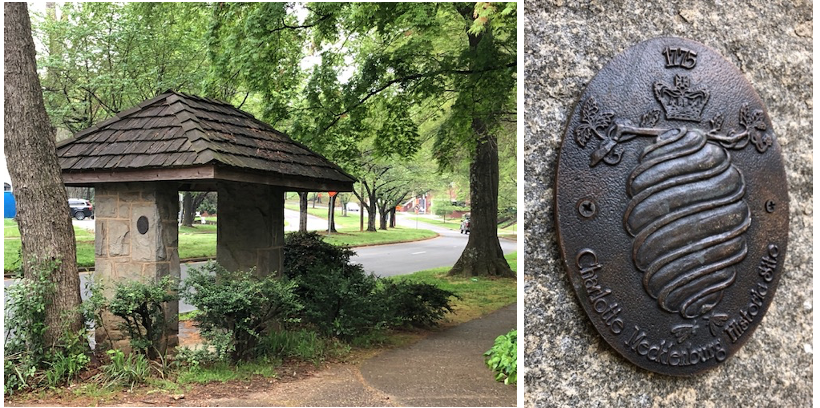
Nolen designed Queens Road as the neighborhood’s spine. Electric streetcars ran on rails along its grassy median – essential transportation in early years when autos were still a novelty. Can you find the brass plaque that marks the streetcar waiting station as a Charlotte Mecklenburg Historic Landmark? Know why it carries the hornets’ nest symbol?
2. DAVID CLARK HOUSE (1914) – 100 Hermitage Road
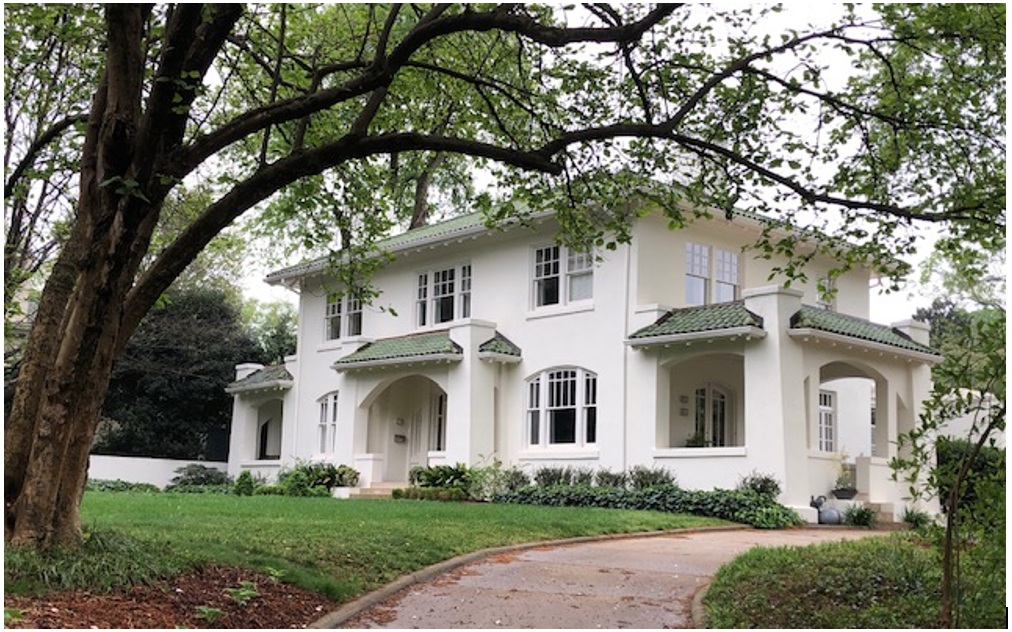
3. HERMITAGE COURT GATEWAYS (1912) -- Hermitage Court at Hermitage Road
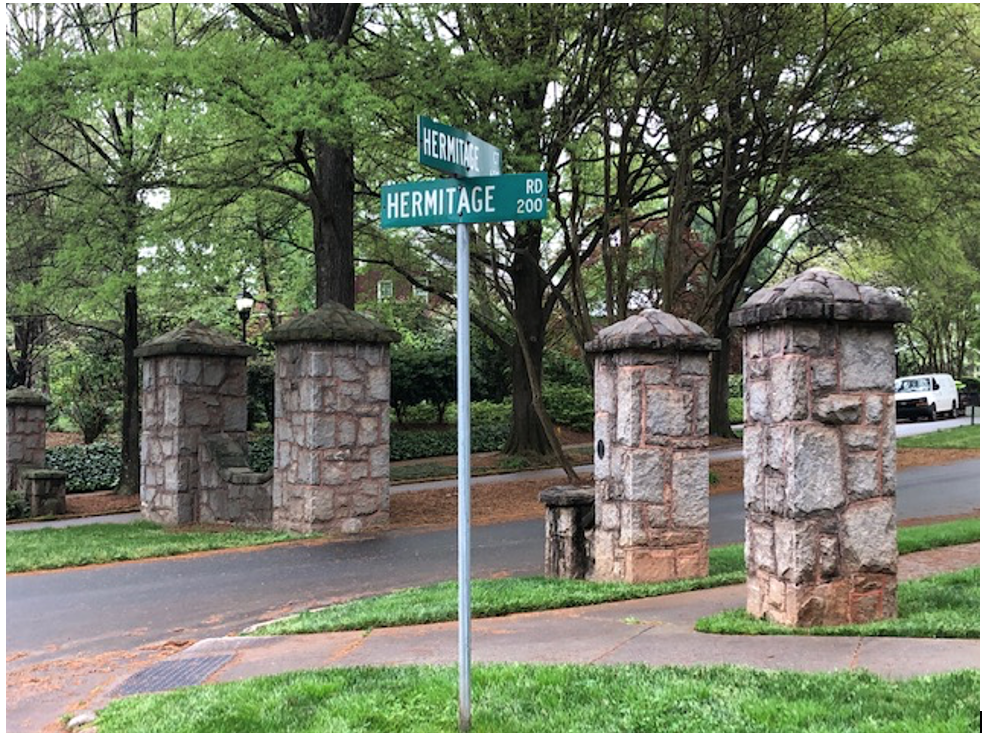
Real estate promoter Floyd M. Simmons bought a chunk of land from Myers Park’s main developer George Stephens. Simmons laid it out as a one-block enclave called Hermitage Court. He built a grand white-columned Colonial Revival mansion for himself near the stone gateways, setting the tone for subsequent residents.
The Hermitage Court Gateways are an official Charlotte Mecklenburg Historic Landmark. Can you find the brass plaque?
4. FLOYD M. SIMMONS HOUSE (1914) – 625 Hermitage Court
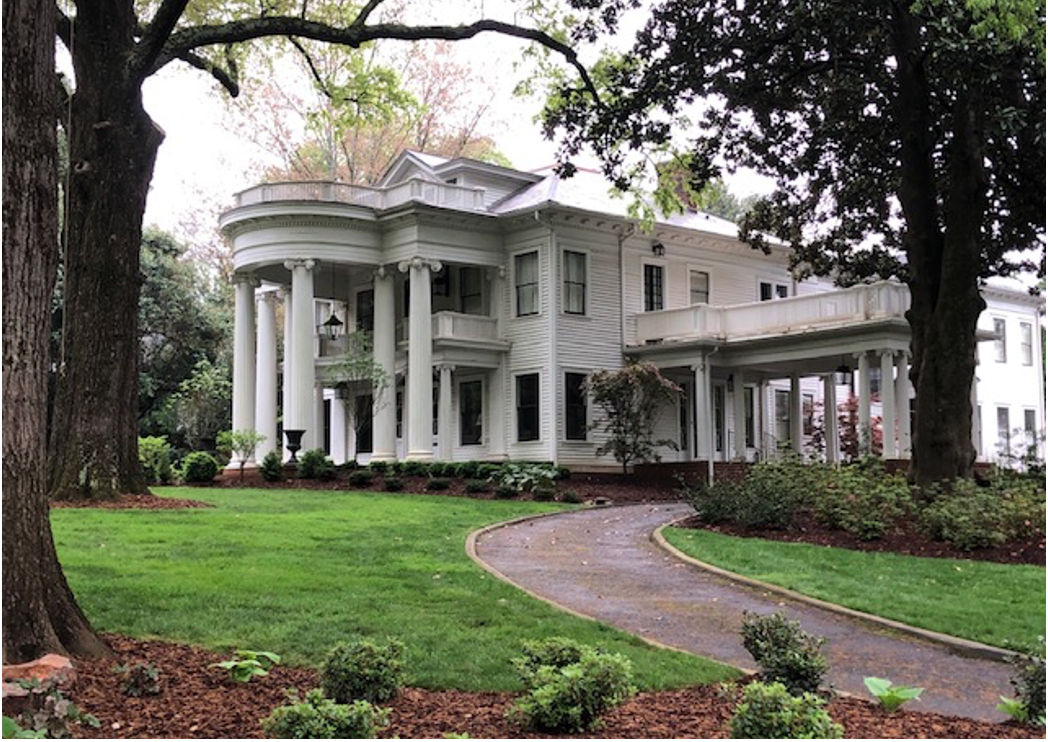
The Simmons House is an official Charlotte Mecklenburg Historic Landmark.
Continue on Hermitage Road (don’t go through the gates onto Hermitage Court)
5. STUART CRAMER, JR., HOUSE (1928) – 200 Hermitage Road
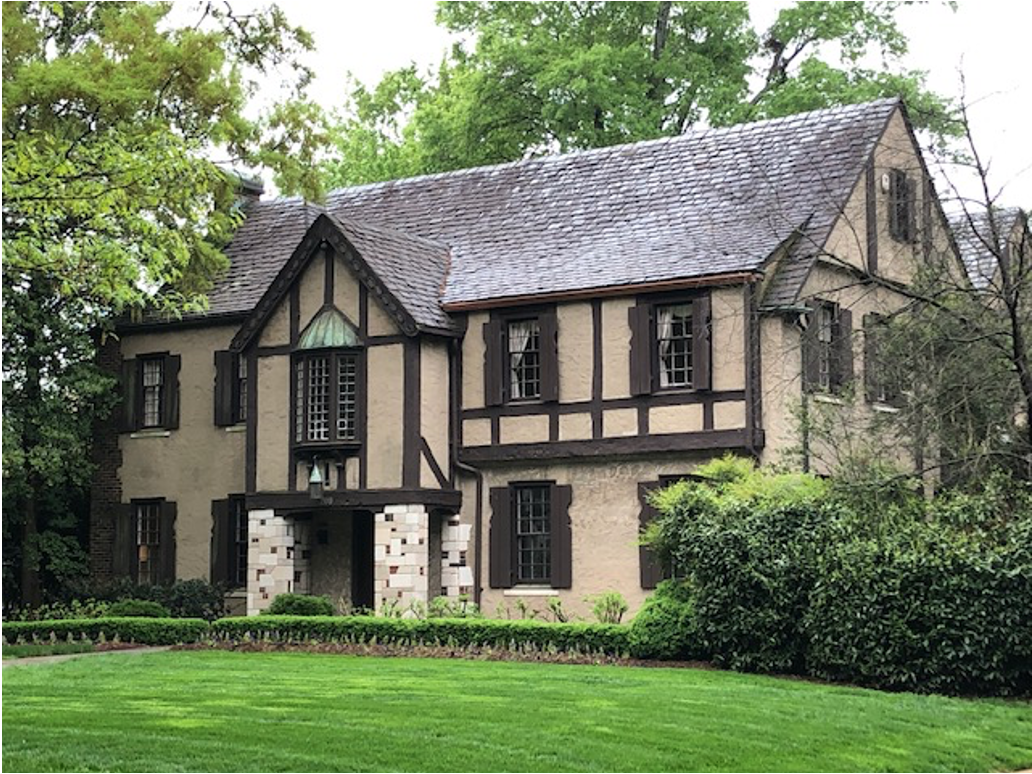
Continue along Heritage Road as it bends leftward. Note the Edgehill Greenway Park on your right (we’ll pass it again later). After Edgehill Road South splits off, you’ll see the sign on your right for the Duke Mansion. Do NOT walk up the driveway.
Instead, continue up Hermitage Road for about half a block. You’ll see brick stairs on your right. Climb them, then follow the sidewalk a few yards till the Duke Mansion appears.
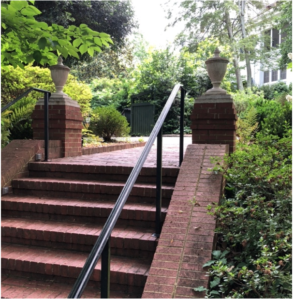
6. JAMES B. DUKE MANSION (1915, expanded 1919) – 400 Hermitage Road
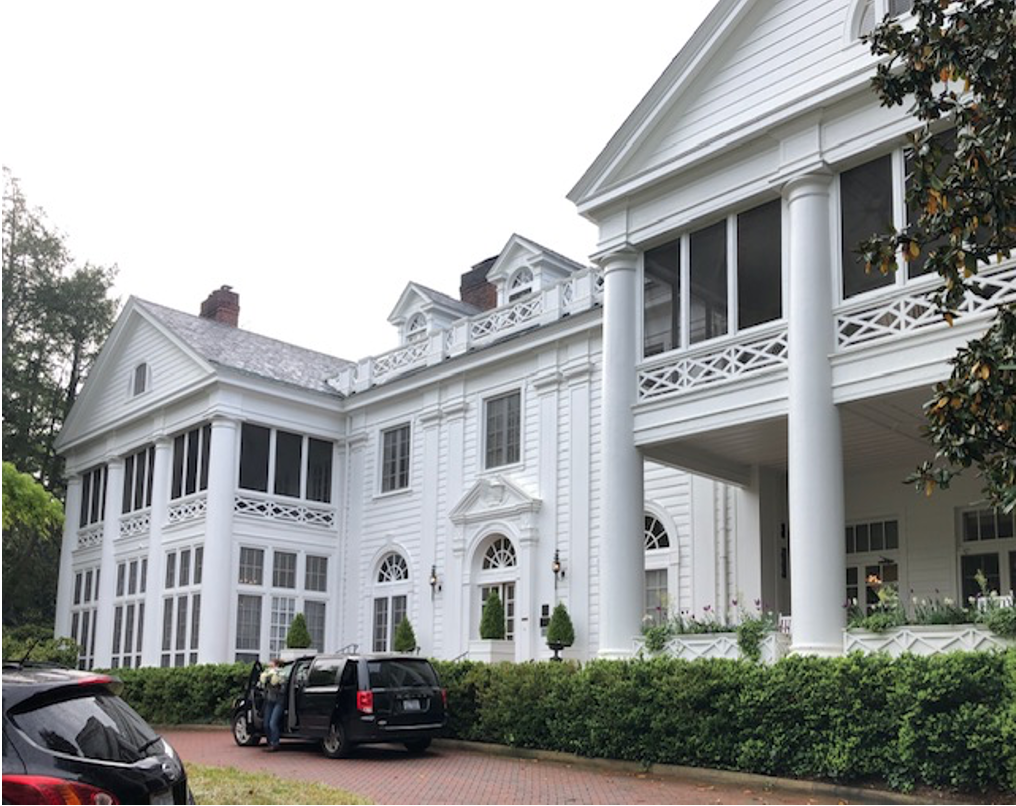
Durham-born James B. Duke made his first fortune mass-producing cigarettes — then launched what is now Duke Energy, damming up Carolina rivers to create electric power. He expanded an existing Myers Park home to some 50 rooms. Here he created the huge Duke Endowment which still funds hospitals, churches and colleges including Davidson, Johnson C. Smith University and Duke University.
Today the Mansion is a nonprofit operating as an historic inn and meeting place. Check with front desk staff — if it’s not a busy day, they will welcome you into the handsome interior, including a small exhibit on the second floor about the Mansion’s notable owners over the decades.
Designed by noted Charlotte architect C.C. Hook, the Duke Mansion is an official Charlotte Mecklenburg Historic Landmark.
7. CHARLES E. LAMBETH HOUSE (1927) – 435 Hermitage Road
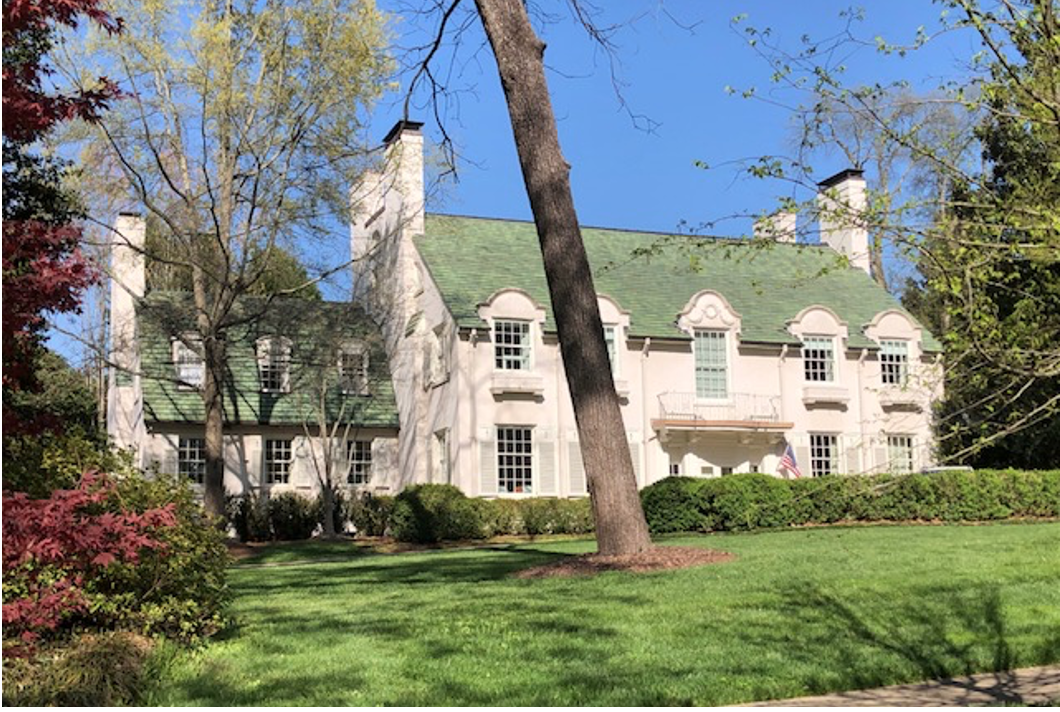
Real estate and insurance executive Charles Lambeth won election as Charlotte mayor 1931 – 33 soon after completing this residence. Wife Laura was the only daughter of the founder of Cannon Mills. Philadelphia society architect Charles Barton Keen designed the house in the French Renaissance Style. His other NC projects included Reynolda House for the R.J. Reynolds tobacco family in Winston Salem, a Cannon home in Concord and the Charlotte County Club.
8. E.C. MARSHALL HOUSE (1915) – 500 Hermitage Road
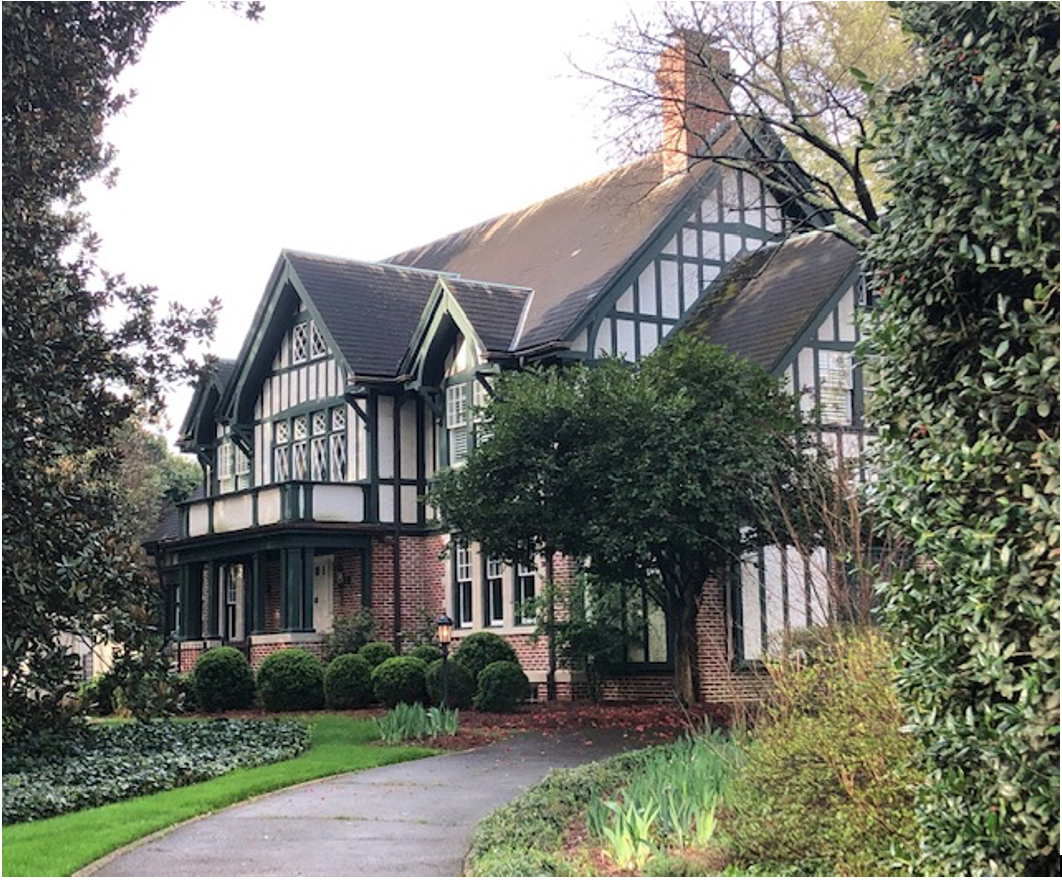
A handsome Tudor Revival residence by local architect Franklin Gordon. Marshall served as president of James B. Duke’s Southern Power Company — today Duke Energy, the nation’s second largest electric utility. A powerplant on the Catawba River, Marshall Steam Station, honors his memory.
HERE YOU HAVE TWO OPTIONS: Shortcut: turn right on Ardsley Road. In the tour description, skip ahead to # 16. Longer loop: For a jaunt around one additional (long-ish) block, continue along Hermitage Road. The park will be on your left.
9. J.S. MYERS PARK (1911) – bounded by Ardsley, Hermitage and Providence roads
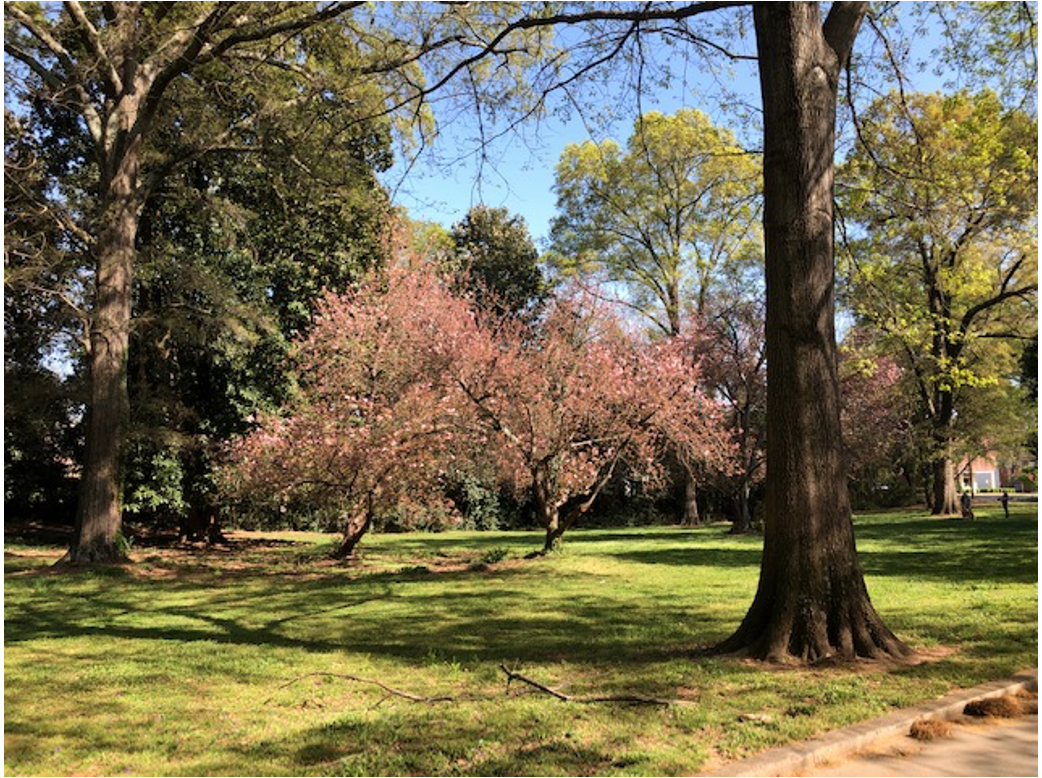
10. H.M. WADE HOUSE (1928) – 530 Hermitage Road
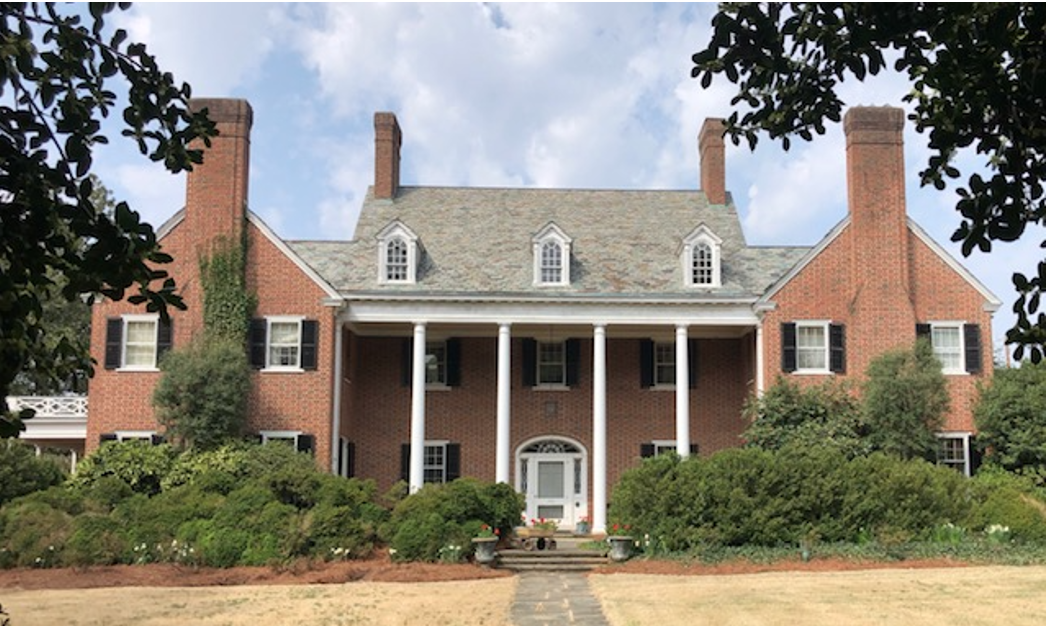
H.M. Wade owned a wood-working factory that turned out furniture and counters for stores and banks. He hired renowned architect Charles Barton Keen to craft this Colonial Revival manse. Today a tall green hedge makes it hard to glimpse – except where the front walk slices through.
Turn right on Granville Road.
11. H.M. McADEN HOME (1917) – 920 Granville Road
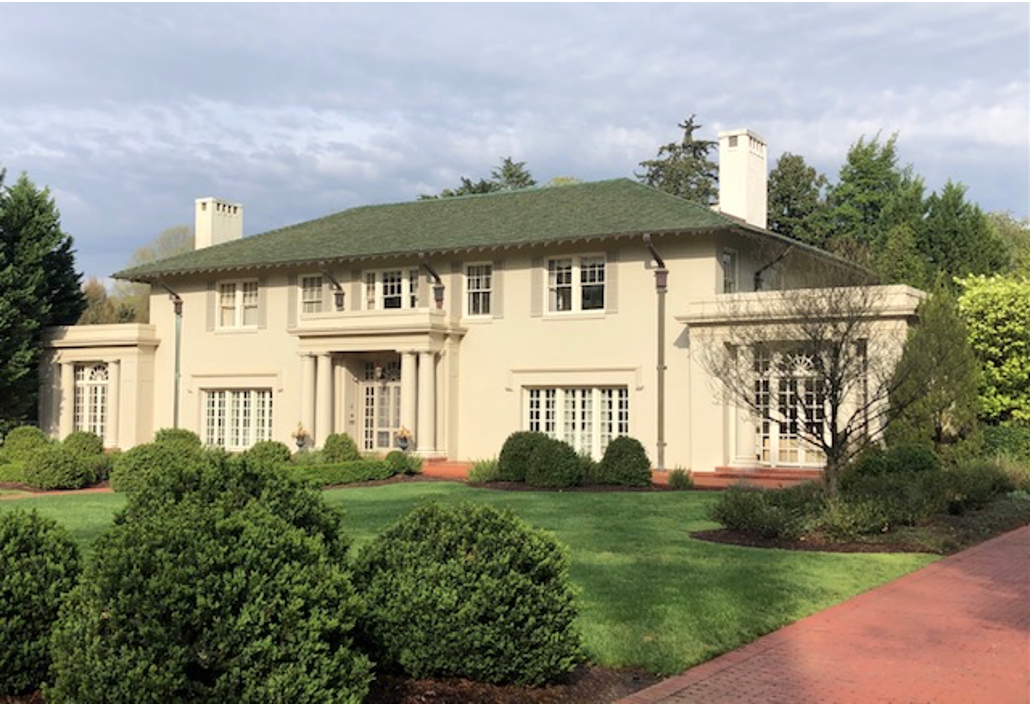
Leading Charlotte architect Louis Asbury provided this serene Neoclassical design for H.M. McAden. One branch of the McAden family owned textile mills at McAdenville in Gaston County. The Charlotte branch were bankers; H.M. McAden ran First National Bank in an Asbury-designed tower at 110 S. Tryon (today the building is Truist Bank).
The McAden House is individually designated as a Charlotte Mecklenburg Historic Landmark.
12. LAMBETH - GOSSETT HOUSE (1916) – 923 Granville Road
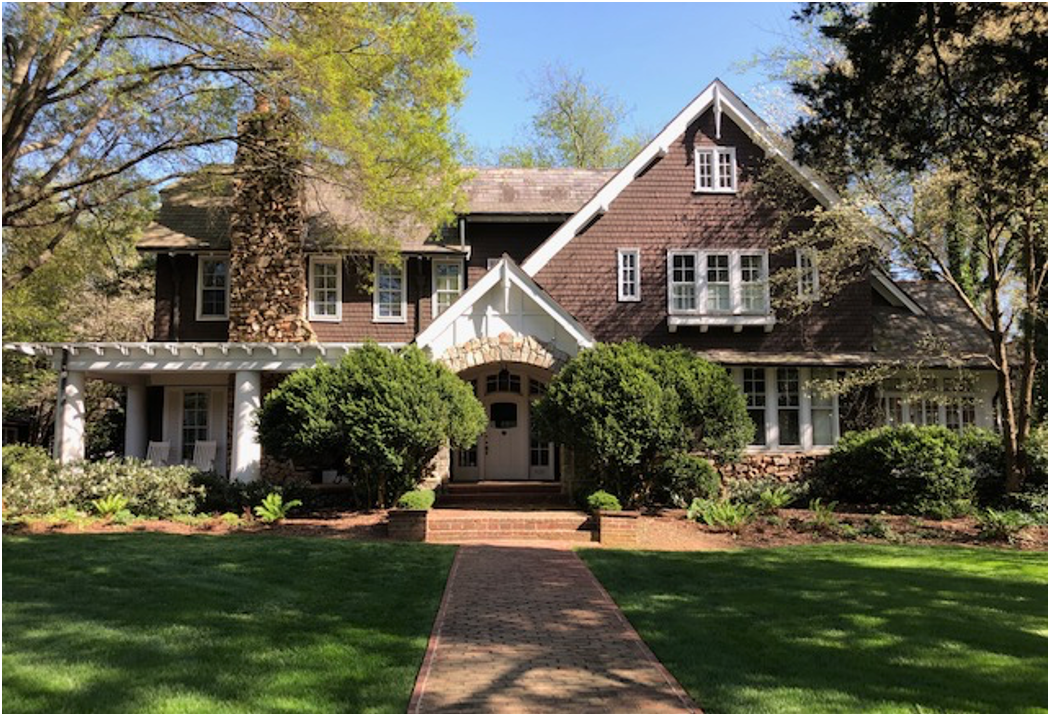
Charles and Laura Lambeth, who we met at 435 Hermitage Road, built this house first. When they departed, B.B Gossett bought it. He owned several textile mills including the Chadwick Hoskins concern on Charlotte’s northwest side. The home’s design recalls a rustic hunting lodge — a country retreat here at what was then the edge of town.
The Lambeth-Gossett House is individually designated as a Charlotte Mecklenburg Historic Landmark.
13. CHARLES MOODY HOUSE (1913) – 949 Granville Road
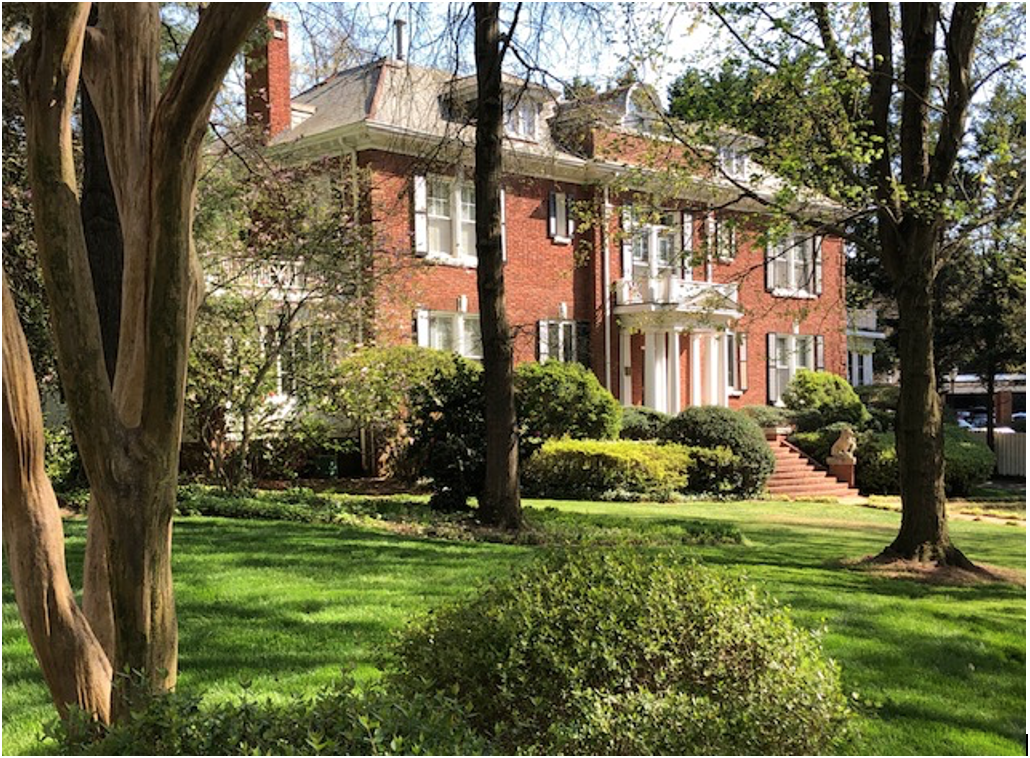
Charles Moody ran Interstate Milling, the city’s largest grain merchant, whose towers remain a landmark alongside Interstate 277 in Fourth Ward. He chose Louis Asbury to design his Colonial style residence.
In the 1980s the Moody House was individually designated as a Charlotte Mecklenburg Historic Landmark. Development threatened its original site on Providence Road — so its owners moved it to this quiet spot.
Turn right on Queens Road. Then turn right again up Harvard Place.
14. NORMAN COCKE HOUSE (1913) – 816 Harvard Place
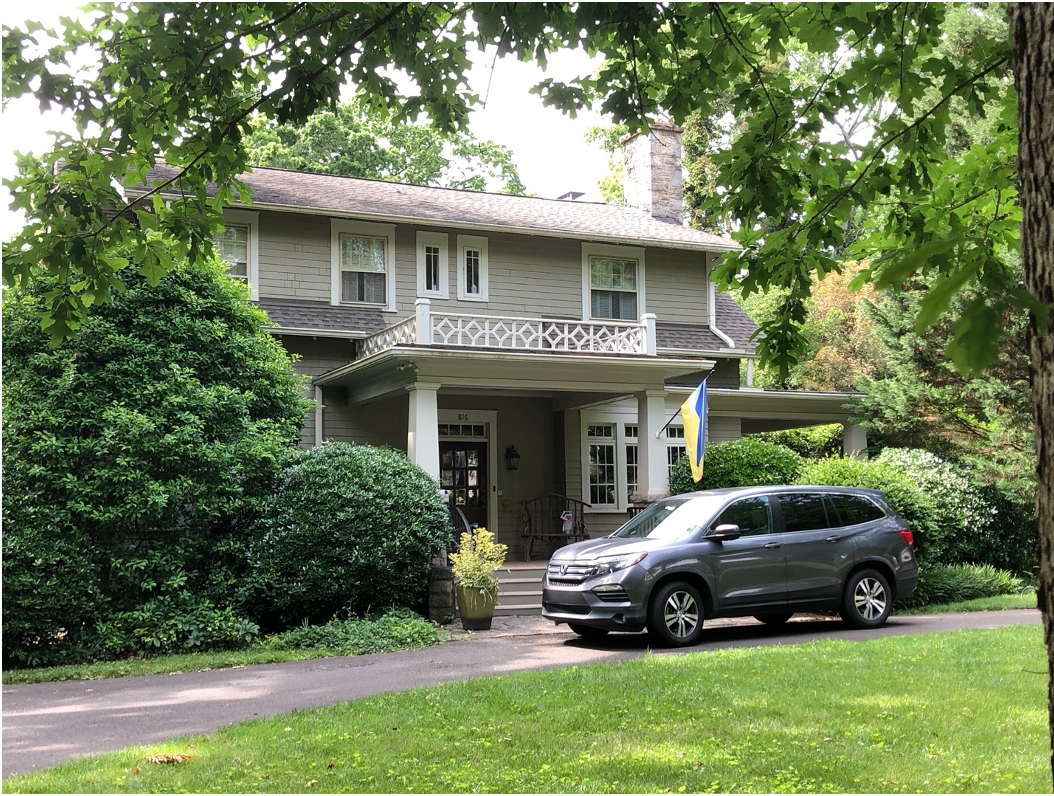
This modest bungalow was built as the home of Norman Cocke. James B. Duke hired him as an attorney for his new electric company in 1906. Cocke went on to play a key role in Duke Power’s land development efforts and he also chaired the Duke Endowment. He became president of Duke Power from 1947 to 1959. When the company created its vast lake north of Charlotte, they named it Lake Norman in his honor.
15. GEORGE STEPHENS HOUSE (1915) – 821 Harvard Place
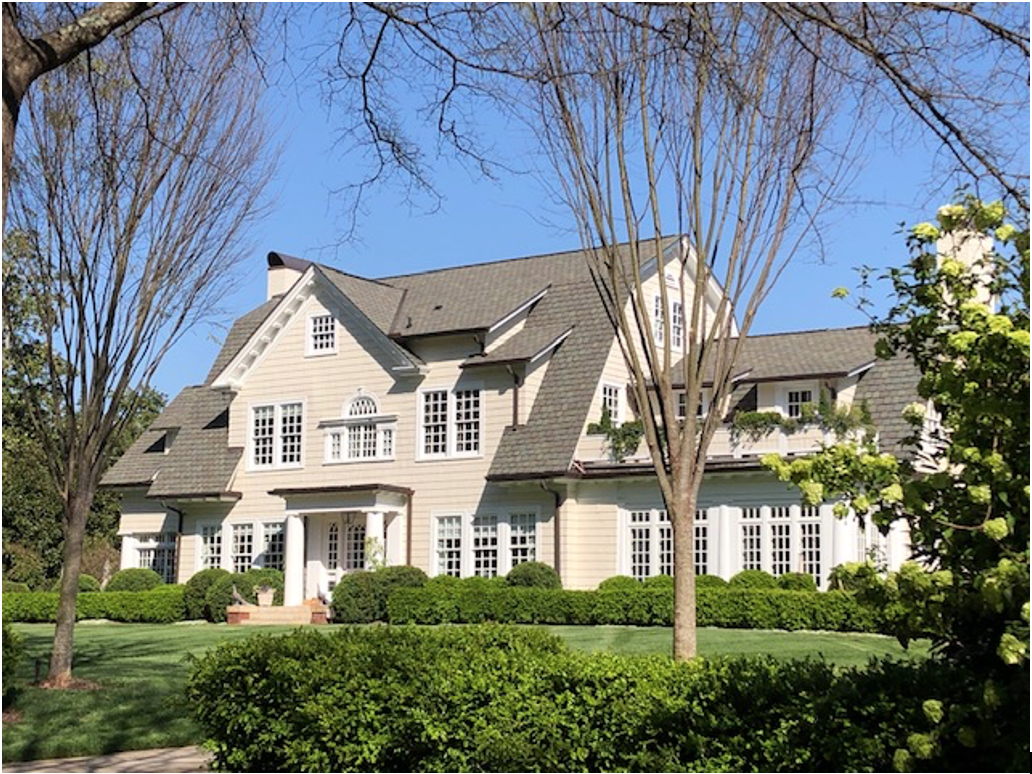
George Stephens played many roles in Charlotte’s early 20th century growth, including co-founding American Trust Bank (predecessor to NCNB/Bank of America). He married the daughter of land-owner John Springs Myers, who encouraged him to transform the family lands into Myers Park. Later owners of the house included textile machinery leader A.J. Draper, Duke Power engineer William States Lee, and members of the Belk Department Store family.
The Stephens House is individually designated as a Charlotte Mecklenburg Historic Landmark.
Where Harvard Place ends, look across Ardsley Road to see the rear gate to the Duke Mansion. Unless there’s an event at the Mansion, you are welcome to go through the brick-columned gate and explore the gardens. (If you’ve taken our shortcut -- directly from Hermitage Road onto Ardsley Road -- here’s where you pick up our tour again. The gate will be on your right, immediately after leaving Hermitage Road).
16. DUKE MANSION GARDENS – gate is at roughly 750 Ardsley Road
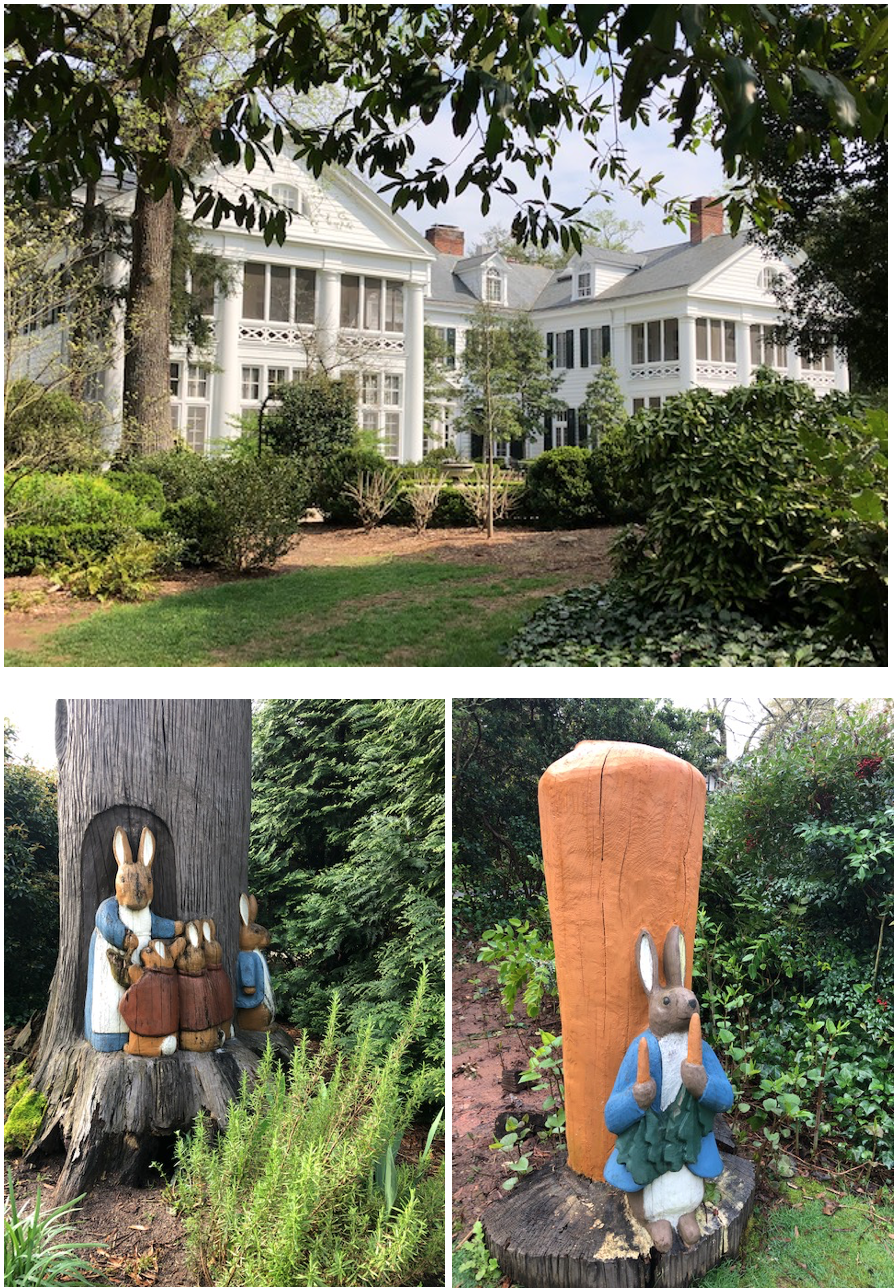
Return to Ardsley Road. As you exit the garden, turn right on Ardsley Road. (Harvard Place will now be on your left).
17. CHARLES I. BURKHOLDER HOUSE (1915) – 801 Ardsley Road (the house faces Harvard Place)
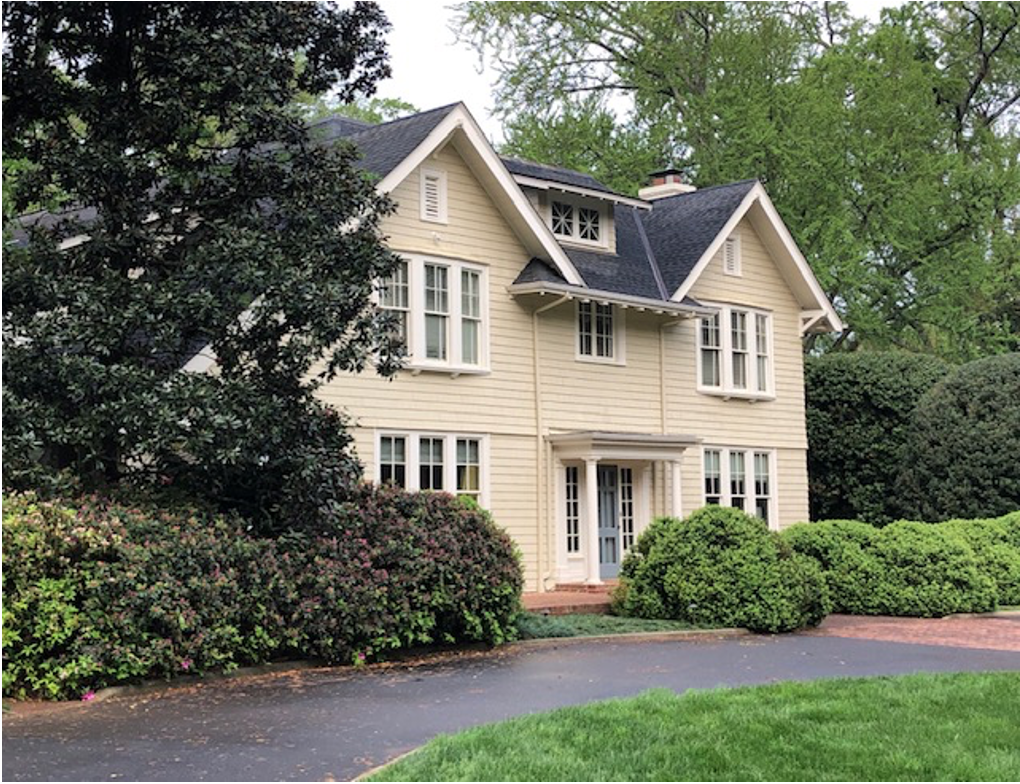
18. E. R. CANNON HOME (1919) -- 1107 Queens Road
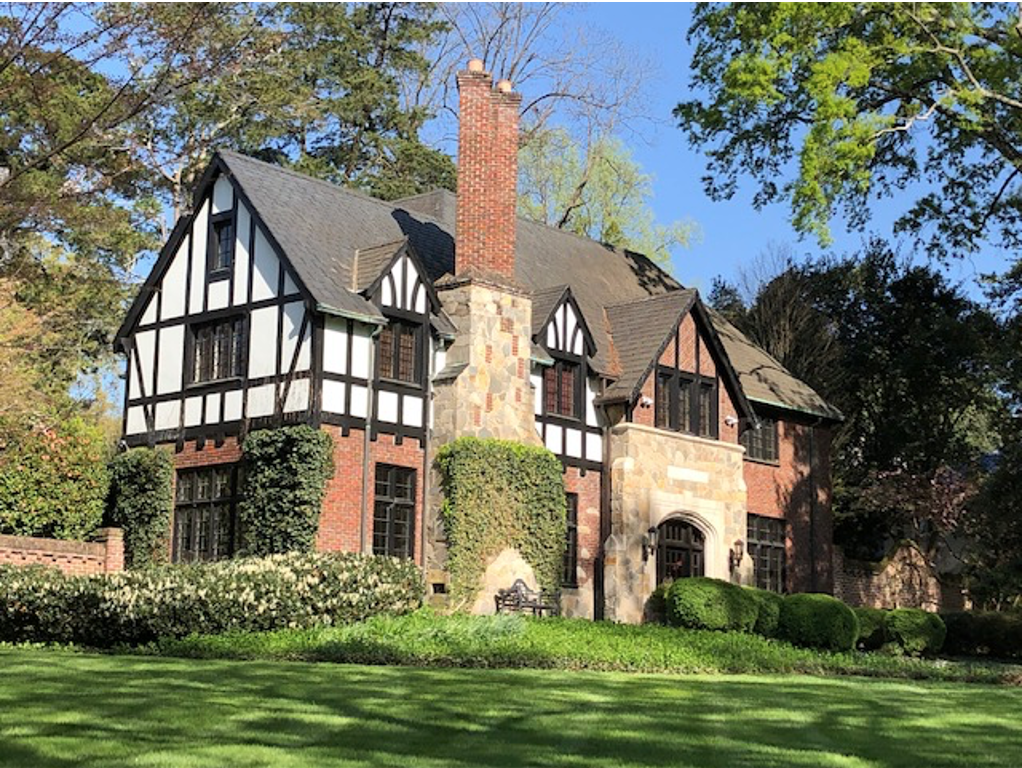
Turn right on Queens Road. You’ll pass St. Marks Lutheran Church, then see the sign for Edgehill Road Park. Turn right onto Edgehill Road NORTH on the far side of the park.
19. EDGEHILL NEIGHBORHOOD PARK
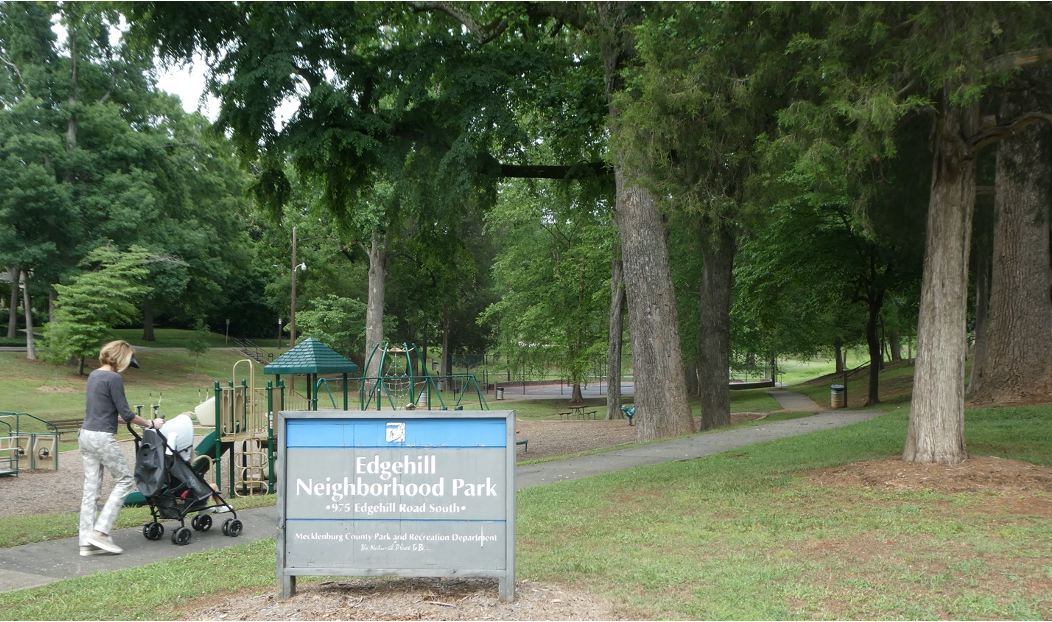
Planner John Nolen loved greenways. He envisioned a system of greenway parks following the creeks throughout Charlotte. Only a small part of Nolen’s dream was built in his lifetime. Today Charlotte is helping construct a regional greenway system called the Carolina Thread Trail.
20. GRESHAM HOUSE (1926) – 724 Edgehill Road North
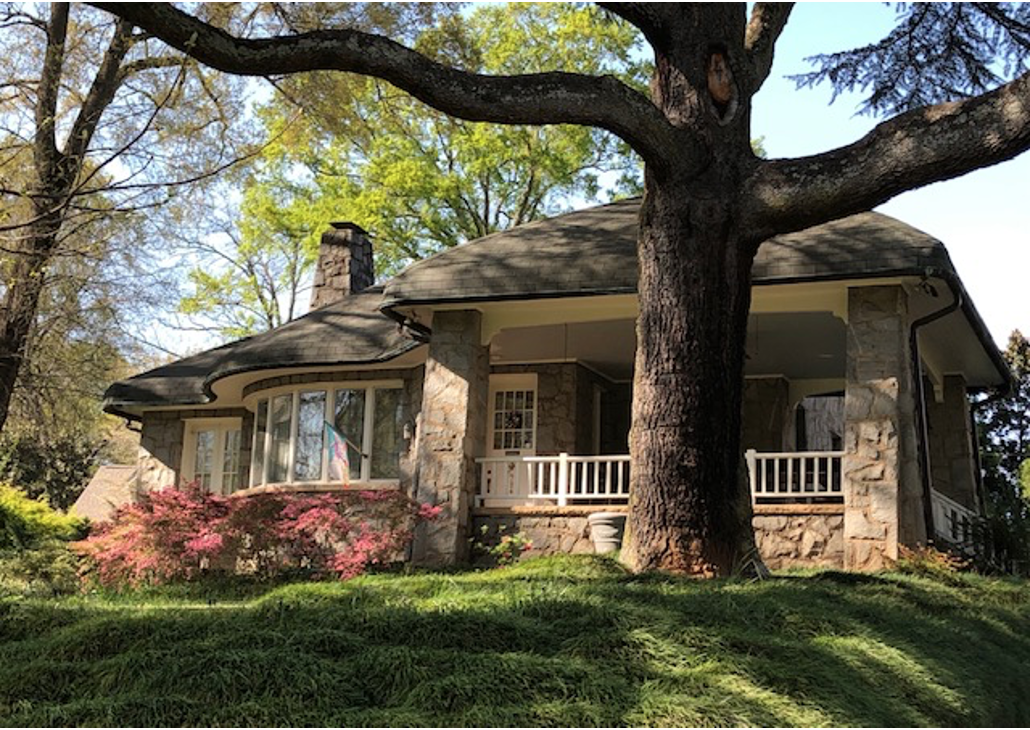
Edwin and Nettie Gresham owned a cafe and their son E. B., Jr., was a lawyer. Their stone house is an excellent example of the Bungalow style with a curving roof that was meant to imitate thatch.
The Gresham House is individually designated as a Charlotte Mecklenburg Historic Landmark.
At the end of Edgehill Road North, turn left on Hermitage Road. In two short blocks you’ll be back at our starting point.
Want to learn more?
Legacy: The Myers Park Story, 3rd edition, by Mary Norton Kratt and Tom Hanchett, is for sale at the Duke Mansion.
New Towns for Old, by John Nolen, is still in print thanks to the American Society of Landscape Architects. It includes a full chapter on Myers Park, as well as a new biographical essay about Nolen’s career.
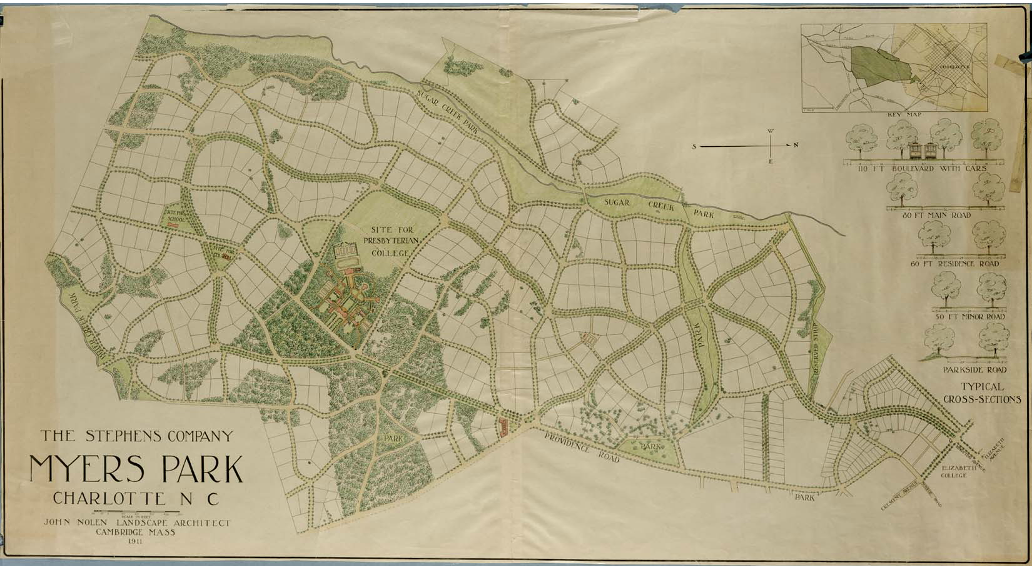
Our Charlotte Walking Tours
Some other tours we like
Mid-Century Modern in Center City
ArtWalks Charlotte – self guided walking tours of murals and other public art
Sorting Out the New South City explores how Charlotte became a city of neighborhoods. Book discussion guide available here >>

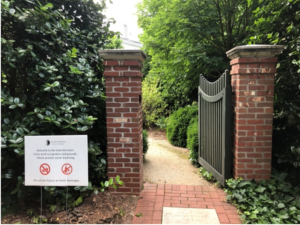
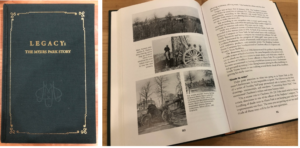
 Historic Plaza Midwood
Historic Plaza Midwood